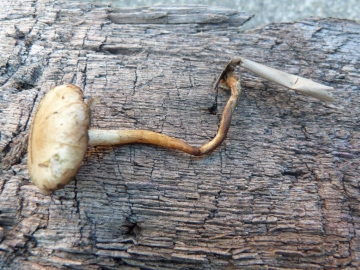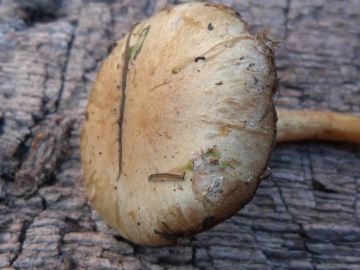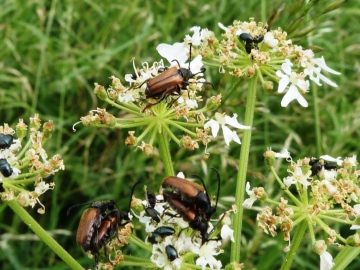My first Basidiomycetes of the current season was found while ploughing through a reed and rush-bed at Blue House Farm looking for piles of Water Vole poo, as one does when helping to conduct a Water Vole survey. The fungi in question was growing on reed and rush debris in the middle of the ditch and with its yellow-brown cap, clay coloured gills and long, thin stem, with a remnant ring at the apex, was clearly attributable to the Agrocybe, a member of the genus Strophariaceae.
It eventually keyed out as Agrocybe elatella in Funga Nordica, a species found on wet soil in association with Juncus and Carex. In the BMS checklist it is called Agrocybe paludosa and it goes on to state that it is still treated as a variant of A. praecox by some authorities but that the habitat and more “gracile basidiomes†(slender fruit bodies) suffice to separate it in their opinion.
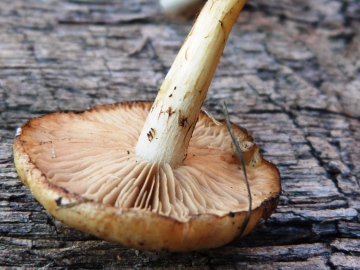 (This photo was taken soon after the specimen was collected, when the gills werer still dark pink but the description was written a few hours later, by which time the colour had faded - hence the discrepency. )
(This photo was taken soon after the specimen was collected, when the gills werer still dark pink but the description was written a few hours later, by which time the colour had faded - hence the discrepency. )
This is a complex group and I have no doubt that if they ever get round to DNA sequencing them they will come up with four new genera and nine new families and that none of the individual fungi will be called Agrocybe elatella, Agrocybe paludosa, or even Agrocybe praecox var. paludosa but will be given an entirely new name on the grounds that it was first described three days earlier than previously thought, by a different mycologist, and the name he gave it must now take precedence. Such are the joys of amateur mycology nowadays!
Anyway, as there are no Essex records on the BMS database of this “seldom reported but apparently widespread†species I thought that I would write a full description here:
Agrocybe elatella. Blue House Farm EWT Reserve, North Fambridge. July 22nd 2014. Cap 3.5cm; shallowly convex; margin in-rolled; straw-buff, darkest in the middle, becoming yellow-buff towards the margin; slightly tacky when wet; centre smooth, becoming slightly fibrillose towards margin. Gills clay-buff, darkening to purple-brown with age, margin a little paler; adnate-emarginate; cheilocystidia club-shaped. Stem 10cm, tapering towards base – not bulbous; wavy/distorted in lower half, perhaps due to growing conditions; velar remains (remnant) blackish, with fragments of ring scattered down stem beneath; apex, above ring, whitish, becoming progressively darker with age and handling towards base; slightly fibrillose; densely yellowish hairy with mycelium at rooting base; attached to leaf fragments. Spores 8-9um x 5-6um (10 measured), oblong. Growing in association with Phragmites and Juncus in wet ditch.
Was hoping to lodge the specimens at Wat Tyler ( it’s cheaper than Kew if they really are charging £120 per taxon nowadays) but I left the fungi drier on too long and they were done to a crisp!
Actually, it was not the first fungi to turn up this autumn. That honour fell – inevitably – to Fairy Ring Champignon Marasmius oreades. Earlier in the summer I photographed these Longhorn Beetles nectaring at Hogweed and their identification was confirmed by PH as Pseudovadonia livida, a species that (unlike most of this group, which inhabit woodland) is associated with grassland soil infested with this fungi. A couple of days later it also turned up at Fryerning Churchyard, another site where Fairy Ring is abundant.
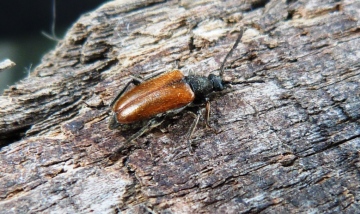 PS: Thanks Mary for identifying the micro fungi found on grass stems at Blue House – much appreciated.
PS: Thanks Mary for identifying the micro fungi found on grass stems at Blue House – much appreciated.

















